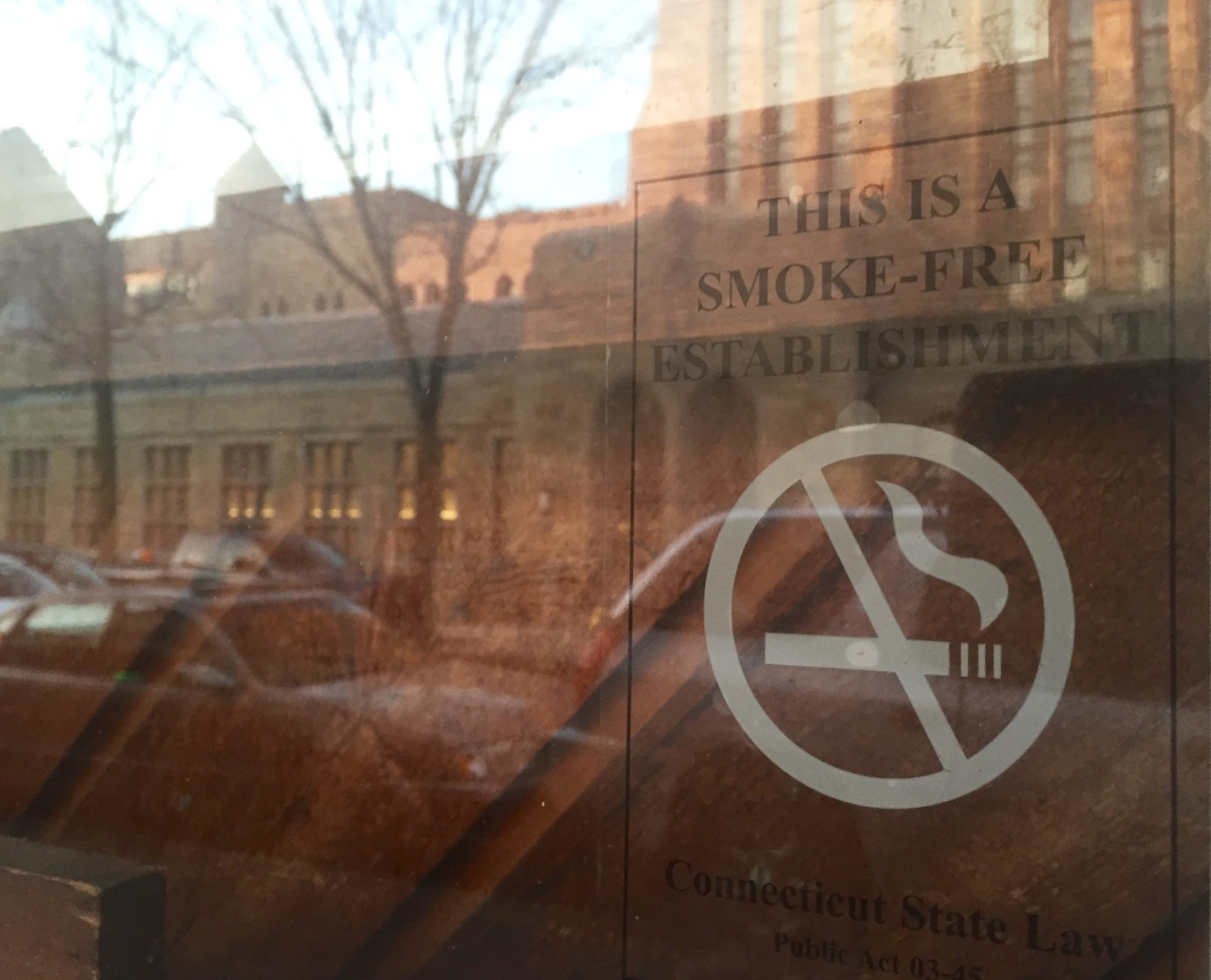Yale study finds smoke-free worksite laws help to reduce vaping
Tobacco use is the number one cause of preventable deaths in the United States, Professor Susan Busch explained. Professor Abigail Freidman added that “understanding how smoke- and vape-free air laws affect [smoking and vaping] behaviors is critical to informing state and local policy decisions going forward.”

Yale Daily News
A recent study at the Yale School of Public Health identified that smoke-free worksite laws may help not only to reduce levels of cigarette smoking, but also to decrease levels of vaping.
The study was conducted by assistant professor of public health Abigail Friedman and professor of public health Susan Busch to address two main questions. First, with e-cigarettes widely available, how do smoke-free restaurant or worksite laws — state and local policies that ban combustible tobacco use in certain settings — affect smoking and vaping behaviors? Second, what is the effect of instituting additional vape-free air restrictions to places with existing smoke-free worksite laws?
The researchers found that smoke-free worksite laws were associated with reductions in vaping and increases in smoking cessation among adults aged 26 to 54. However, implementing vaping restrictions in areas where smoke-free laws were already in place was not associated with any additional reduction in vaping. The study’s findings were published in the journal Addiction in February.
“Tobacco use is the leading cause of preventable death in the US,” Busch wrote in an email to the News. “Our results indicate that smoke-free worksite laws were associated with meaningful decreases in current smoking among young adults.”
Busch explained that to examine the impact of smoke-free restaurant and worksite laws on addiction behavior, the researchers used 2014-2018 data from the National Health Interview Survey where respondents self-reported levels of smoking, smoking cessation and vaping.
Through statistical analyses, the researchers compared levels of tobacco use among respondents in different areas of counties with varying degrees of coverage under smoke-free worksite laws, according to Friedman. Additionally, the researchers compared this initial data to tobacco use among the same respondents after new smoke-free worksite policies had been adopted at the state and local levels.
“Some states and localities have added vaping restrictions to existing smoke-free air laws, or adopted new policies restricting both behaviors,” Friedman said. “However, such policy changes could increase smoking if they reduce incentives to choose e-cigarettes over conventional cigarettes. Understanding how smoke- and vape-free air laws affect both of these behaviors is critical to informing state and local policy decisions going forward.”
Freidman described that to distinguish habitual cigarette use from simple experimentation with tobacco products, the National Health Interview survey defined “current smoking” to include respondents who had smoked a minimum of 100 cigarettes in their lifetime and had also smoked within a month prior to completing the survey. In contrast, the survey did not distinguish between habitual vaping and experimentation, as “recent vaping” simply encompassed e-cigarette use in the 30 days prior to taking the survey.
Friedman explained that the researchers were most interested in smoking and vaping outcomes for the 18-25 year-old age group, as nearly all individuals who smoke begin at or before the age of 25. The researchers found that while smoke-free worksite laws were associated with reductions in vaping among 18 to 25 year olds, additional vaping restrictions did not result in further decreases in vaping beyond the impact of the smoke-free laws alone.
“Adding vaping restrictions to [existing smoke-free worksite] policies was not associated with a reduction in recent vaping among 18-25 year-olds,” Friedman said.

Both Busch and Friedman suggested policy recommendations that should stem from the study’s findings. Friedman explained that the study affirmed the effectiveness of smoke-free worksite laws in reducing smoking uptake as well as their ability to increase smoking cessation.
According to Friedman, while the evidence was not conclusive, the study’s findings suggest that adding vaping restrictions to smoke-free worksite laws might actually increase young adult smoking compared to smoke-free worksite laws that do not prohibit vaping. Friedman explained that this finding means policymakers should be careful when considering vape-free air laws.
“As current evidence largely indicates that smoking is more harmful than vaping, this finding recommends caution in the implementation of vape-free air laws, as they may have costly unexpected effects,” Friedman said.
Friedman also discussed some of the main limitations of this study, namely that it was not a randomized experiment. This means that although the study’s findings are compelling, the study did not meet the criteria to identify causal effects between smoke-free worksite laws and their effect on vaping or smoking cessation. Additionally, as with any research that utilizes self-reported behavioral surveys, estimates may have been biased due to respondents underreporting behaviors like smoking and vaping.
Busch noted that despite the study’s potential limitations, it does reveal important information about smoke-free worksite laws and health.
“These laws are associated with fewer individuals smoking in the past year, more smokers quitting and declines in vaping,” Busch wrote. “Yet, 18 states still do not have smoke-free worksite laws suggesting enacting these laws now may reduce smoking in these states.”
Lisa Fucito, associate professor of psychiatry and Director of the Tobacco Treatment Service at Smilow Cancer Hospital was not involved with the study, but commented on the researchers’ findings.
She noted that the study is particularly influential in light of the “changing landscape of tobacco use” and the rise in popularity of e-cigarettes. Fucito described that the study raises crucial questions about adding vaping restrictions to smoke-free worksite laws and opens the door for future research.
“More research is needed to understand the potential benefits/risks of adding vaping restrictions to smoke-free indoor air laws,” Fucito wrote in an email to the News. “Studies that evaluate more detailed data about users’ vaping history and behaviors over time will be needed.”
According to the Centers for Disease Control and Prevention, cigarette smoking and secondhand smoke are responsible for more than 480,000 deaths annually in the United States.
Sydney Gray | sydney.gray@yale.edu








